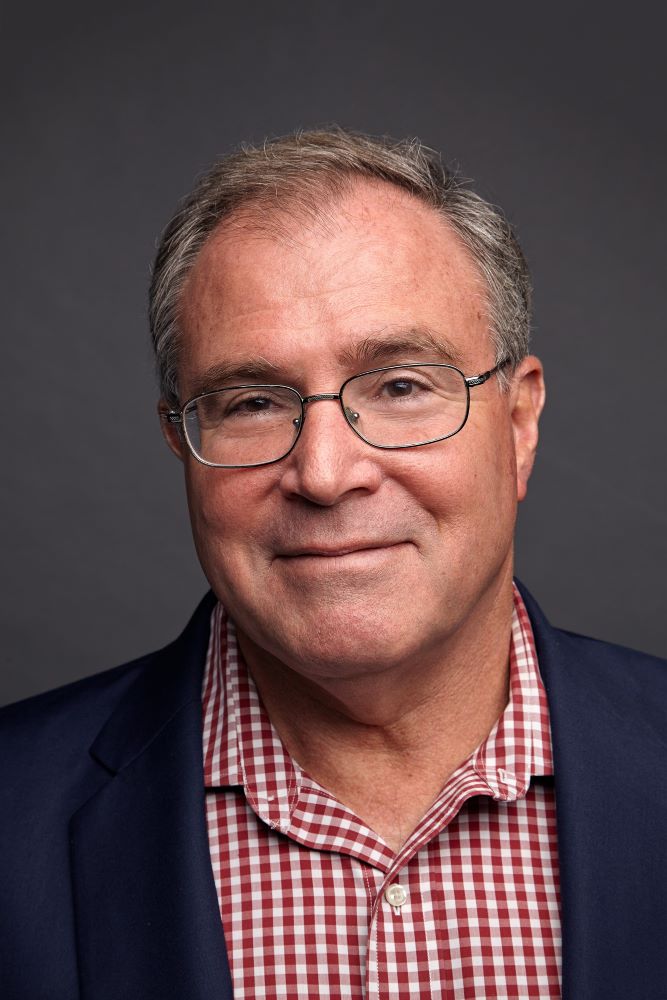Endgame Over
- Also in TR Print Edition
- January 2, 2024
- 0
- 13 minutes read

Image: Gintare Stackunaite

Policymakers are having second thoughts about generational tobacco bans.
By Stefanie Rossel
On Nov. 24, 2023, New Zealand’s new conservative government scrapped the Smoke-Free Aotearoa 2025 Action Plan that was passed under former Prime Minister Jacinda Ardern with the goal to reduce the share of smokers in the country to 5 percent or less by 2025.
The law required a drastic reduction of legal retail outlets for tobacco products, from currently 8,000 to less than 600 starting in 2024, and the mandatory sale of very low-nicotine cigarettes from 2025. The most spectacular element of the legislation, however, was what would have become the world’s first generational smoking ban. Under this provision, those born after 2008 would never be able to legally buy cigarettes. The first part of the new law entered into force in January 2023, when gifting or selling combustible tobacco products intended for smoking to people born on or after Jan. 1, 2009, became illegal.
At 6.8 percent in 2023, New Zealand already has a low adult smoking rate compared to other countries. Smoking prevalence, however, is considerably higher among the indigenous population and Pacific Islanders: According to the most recent Ministry of Health statistics, 17.1 percent of Maori adults smoked in 2022/2023. Smoking rates among Maori women and Maori men were 17.5 percent and 16.8 percent, respectively, during that period, with Maori women having one of the highest lung cancer rates in the world. Pacific peoples had a smoking rate of 6.4 percent.
The ban was expected to save 5,000 lives a year. According to recent modeling, it could have saved New Zealand’s healthcare system $1.3 billion over 20 years.
The repeal of the plan is part of the new government’s three-party coalition agreement in which both minor partners demanded the retraction. Critics have accused the parties of ditching the measure to ensure sufficient cigarette tax revenues to fund their planned tax cuts. The new government, however, cited concerns about illicit trade among other reasons. A generational smoking ban as envisaged, incoming premier Christopher Luxon said, would have created a flourishing black market.
Uncertain Outcome

Public health experts expressed shock at the retraction, calling it “public health vandalism,” a “disastrous, terrible move” and a “squandered opportunity.” Marewa Glover, director of the Centre of Research Excellence: Indigenous Sovereignty and Smoking, takes a different view. “There was no real-world evidence for any of these policies,” she says. “No one in the world knows what would have resulted or what positive or negative consequences would have occurred. We can surmise what modeling does. Data for 2022/2023 shows smoking prevalence is continuing its decline. The 40 percent of adults living in the least deprived neighborhoods are already below 5 percent. Even the 40 percent in the most deprived areas are around 10 percent. Smoking prevalence among under 18-year-olds was already very low.”
The ban on sales of tobacco to adults aged 18-plus, she adds, was not going to take effect until 2027. “Some jurisdictions already have restricted tobacco sales to persons who have obtained the age of 21 years or over. So, there was plenty of time for future governments to repeal it before it ever impacted adults.”
She says that the big economic and social impact of the Action Plan would come from the reduction of tobacco retailers to 600 in a nation nearly as big as Japan. “What’s more, the convenience store industry retailers of combustible tobacco products—and a majority now also sell a limited range of vaping products—are largely owned by small family-owned businesses popular with our New Zealand Indian/Asian population. Many would have reportedly suffered loss because of loss of impulse trade as buyers of cigarettes were lost. The reduction to only 599 stores was due to take effect on July 1, 2024.”
The measure did not include a phase-in time, compensation or financial assistance to those affected, according to Glover. “My research on the robberies of stores for tobacco products highlighted the serious injuries and harm this sector was already experiencing due to the burgeoning black market demand for tobacco,” she says.
The third radical change, according to Glover, was the ban on the sale of tobacco products containing more than 0.8 mg/g of nicotine from April 1, 2025. “This would have rendered tobacco cigarettes useless—well before the sinking lid on age of purchase began to take effect,” she says. “Insufficient real-world evidence exists to inform the public and policymakers of the implications of such a policy. Evidence would need to consider the social and cultural implications as well as the health benefits. Is it really necessary, especially given the costs and risks, when effective and attractive—to the consumer, at their cost—pathways to very low smoking prevalence exist, such [as] has been proven in Sweden, Norway and Iceland?”
The new government has proposed to reform the regulation of vaping and smokeless tobacco products. Among other measures, it wants to reverse the previous government’s ban on oral nicotine pouches and snus and tax only smoked tobacco products. The restrictions on disposable vaping products are going ahead but with more serious penalties for anyone selling vaping products to under 18-year-olds, and consideration will be given to requiring vape vendors to obtain a liquor license.
According to Glover, some subgroups are already at or below the smoke-free 2025 prevalence goal of 5 percent. “If tobacco harm reduction (THR) was fully adopted, then 5 percent is possible nationally,” she says. Allowing oral nicotine products and exempting noncombustible products from New Zealand’s high tobacco taxes, she believes, would allow manufacturers to reduce the prices for tobacco-heating products, making them more accessible to people who smoke. Oral nicotine pouches and snus would give people another smoking cessation option. “Based on the experience of Iceland and Sweden, we could expect New Zealand to experience ongoing rapid reductions in smoking prevalence,” says Glover.

The war-on-drugs assumption that demand for the drug itself can be eliminated by measures on the supply side has not served society well more generally.”
A Desperate Measure
Tobacco control advocates appear to view the generational smoking ban, first proposed by Singaporean researchers 2010, as a tool to force down cigarette consumption figures that have decreased little in the 20 years since the creation of the World Health Organization’s Framework Convention on Tobacco Control (FCTC). Despite the many restrictions implemented globally, there are still about 1.3 billion smokers in the world.
“The objectives of the FCTC are to ‘eliminate or reduce consumption of tobacco products—and reduce exposure to tobacco smoke,’” says Derek Yach, who as a cabinet director and executive WHO director was instrumental in creating the convention. “The FCTC does not set deadlines to achieve this, but subsequent sustainable development goals call for large declines in chronic disease deaths by 2030,” he says. “The WHO’s latest reports prepared for COP10 [the tenth meeting of the Conference of the Parties to the FCTC], which is now set for February 2024, indicate that most countries are off track to achieve these goals. Note that unless smoking rates decrease fast, death rates from many major chronic diseases will not change.”
While the FCTC does not envisage a generational smoking ban, some tobacco control activists view it as a key component of their “tobacco endgame” strategy. Most smokers, the measure’s proponents argue, start smoking at a young age; stopping the start by consecutively raising the smoking age would break the cycle of nicotine addiction.
Despite New Zealand’s U-turn and a similar decision by Malaysia, where lawmakers abandoned plans for a generational tobacco ban due to constitutional concerns, the idea still finds support internationally.
Singapore has been reported to be “open” to such plans. In 2022, Denmark unveiled proposals to ban the sale of cigarettes and nicotine products to any citizens born after 2010. On Oct. 5, 2023, U.K. Prime Minster Rishi Sunak expressed his support for a generational tobacco ban, saying it was the right step to tackle the leading cause of preventable ill health. According to a spokesperson, he upheld his proposal even after New Zealand repealed its version of the plan.
The consultation period for the proposed legislation closed on Dec. 6, 2023. It has received support from organizations such as the Society for Research on Nicotine and Tobacco (SRNT), which advised the U.K. government to extend the measure to all forms of recreational nicotine that are not approved as medical therapy for smoking cessation, including heated-tobacco products, e-cigarettes, smokeless tobacco, snus and oral nicotine pouches.
Yach thinks this is a bad idea. “I don’t like the smoke-free generation measure, but it is sort of tolerable if confined to smoked products and if there are smoke-free options for nicotine use,” he says. “However, the war-on-drugs assumption that demand for the drug itself can be eliminated by measures on the supply side has not served society well more generally.”
In a poll conducted on behalf of smokers’ lobby group Forest, nearly three-fifths of respondents agreed that when people are 18 years old—and thus legally adults—they should be allowed to purchase cigarettes and other tobacco products. The legislation may be published in Parliament in early 2024. However, at press time, reports suggested that the U.K. was backpedaling on the measure as well, saying the country might raise the legal smoking age to 21 instead.
Untoward Effects

Due to the lag between smoking initiation and health outcomes, a generational tobacco ban would not affect tobacco-related deaths and disease for at least 40 years, according to Yach. “Given the reality that smoking rates among youth today in the U.K. and New Zealand are in low single digits, while rates are substantially higher among middle-aged adults, the policy would have negligible impacts on population measures of smoking,” he says. “The current youth trends simply need governments to stick with what is working already.”
Any policy decision, Yach emphasizes, must be weighed against alternative ways to achieve the same objectives and against the probability of untoward effects. “The ‘generational ban’ has failed to consider both,” he says.
Public health experts have warned that a generational ban would bring about many unintended consequences. In addition to restricting personal liberty, the arbitrary age restrictions would create absurd situations, such as a 28-year-old being deemed capable of purchasing tobacco, while a 27-year-old is not, according to Christopher Snowdon, head of Lifestyle Economics at the Institute of Economic Affairs, who also views prohibition as a driver of illicit trade.
Yach fears a generational tobacco ban could set precedent that will make it easier to apply similar measures to other products such as alcohol and marijuana. And he warns against unintended consequences. “Will the experiences learn[ed] during the alcohol prohibition era apply?” he asks. “Will youth switch to more, other psychoactive substances, some having deadly consequences? Many will argue that, provided THR products are made substantially more available and attractive, young people may try and use a range of current and future psychoactive substances. Is this likely? We cannot know the answer to these questions until the policy starts rolling out. On balance, it seems prudent to not experiment with the lives of future generations.”
Like Glover, he regards tobacco harm reduction, which is included in the definition of tobacco control of the FCTC text, scaled to reach adults who smoke and suffer the health effects, as having the greatest potential to save lives in the shortest possible time when compared to other measures, including the generational ban.
“We know this to be the case based on empirical epidemiological and toxicological studies, foresight models by academics and industry, and the national experiences of Japan, Sweden and the U.K,” says Yach. “My own estimates suggest that if THR and more effective cessation products were fully scaled, we could expect 3 million fewer tobacco deaths annually from the early 2050s. All these deaths would be in adults who are smoking today—not among youth. There is no other intervention that comes close to doing this.”

